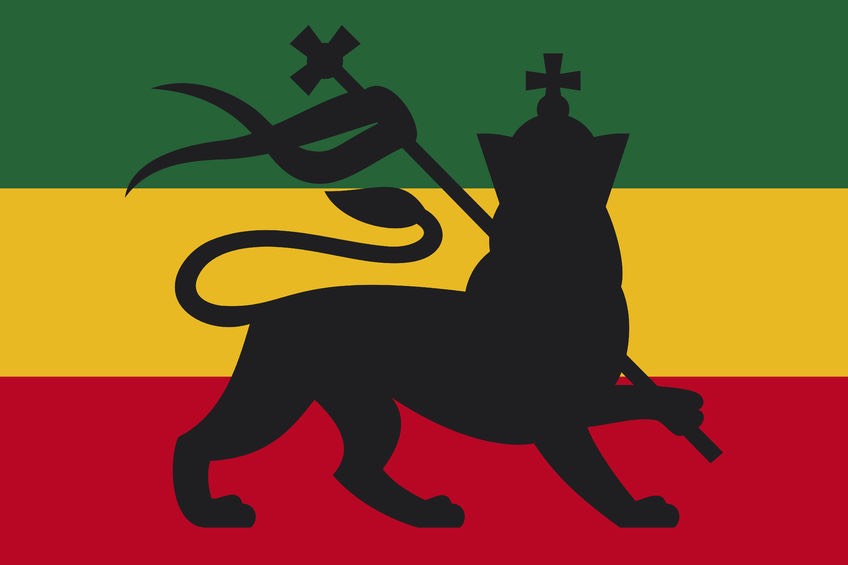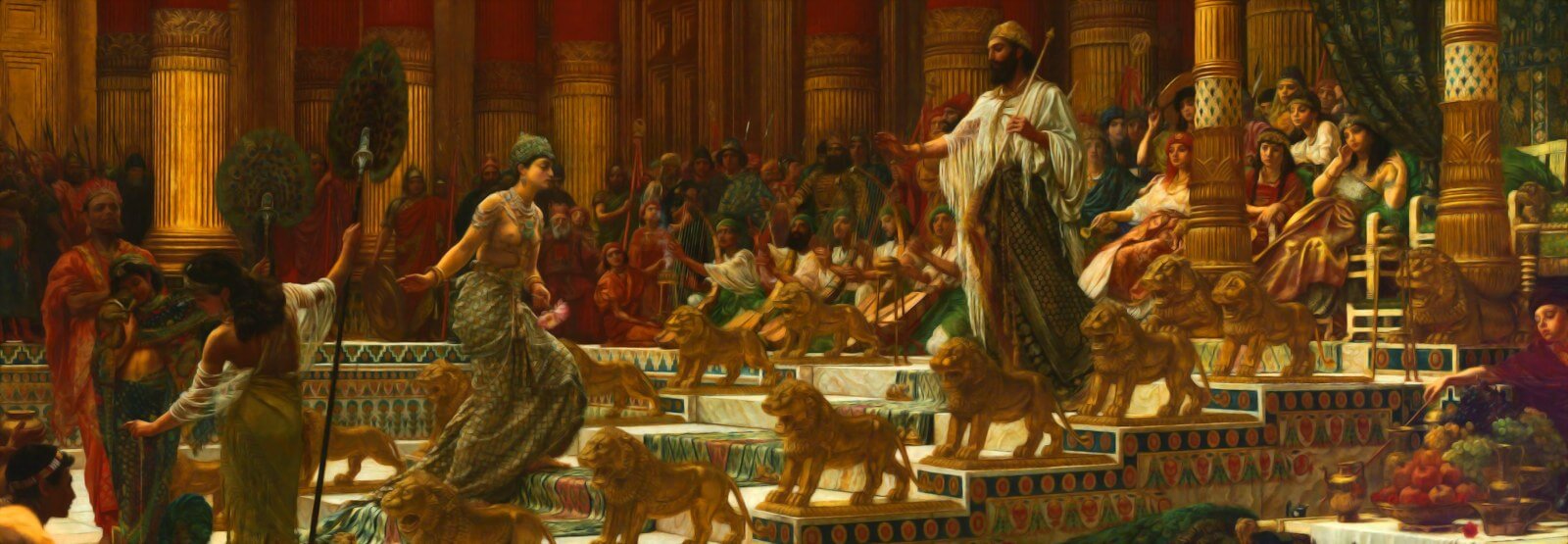Rastafari Beliefs and Practices
Rastafari do not say “we” for plurality. They grow their lingo out of the Jamaican Creole, which is a dialect of English itself. They wear dreadlocks, and worship the emperor Haile Selassie I, believing he is a true messiah and a divine personality, also a direct descendant of King Solomon.
Livity is yet another Rastafari term for cosmic energy and a life force. So, I-tal works to increase livity.
-
Rastafari advocate unity with all things, believing every living soul on Earth is a “brother”, and this spreads far beyond humans. I asked once my Rastafari brother as I pointed to an ant – “And he?”, the dude replied: “Yes, he is my brother. Selassie-ai.”
-
Rastafari deny any violence in any form towards brothers, which are all living creatures on the planet! Rastafari do not usually protest, but when they do, they express their “fight” in reggae sounds. Apparently, not a fight in the Western mentality.
-
Rastafari oppose Babylon for the two reasons listed above.
Do all “rastas” smoke weed?
Nay, this isn’t true, not all Rastafari smoke weed – surprise! The Rastafari principal belief suggests the body is a temple of God, and they accept godsends (including marijuana) to take care of this temple of God and enhance the cosmic energy in it.
“Then God said: Behold, I give you every seed-bearing plant on the face of the whole earth and every tree that has fruit with seed in it. They will be yours for food” (Genesis 1:29)
-
Smoking weed for a Rastafari is a sacramental deal, the spiritual food for the mind, and a medium for meditation to feel universal energy and unity with Jah and oneself.
-
In a rare case when weed does not fit the body and/or the mind, making anything worse, some Rastafari followers refuse to smoke for sake of keeping the “temple of god” (the body) in a good shape.
-
The dominating majority of Rastafari, of course, smokes marijuana and blesses God every time and with every toke for that God gave to all of us such a generous gift.
Why do “rastas” wear dreadlocks?
The reason for wearing dreadlocks is a part of the same model, that the body of Man is a temple of God, and it’s better be not intervened. So Rastafari do not cut hair, because the latter is a part of the divine plan of God towards humans. The formation of a dreadlock is a natural process, and you guess, that “rastas”, those living in asceticism, do not go to a barber’s shop to make dreads. All goes natural way.
Rastafari do not say “we” for plurality
The religious meaning of deprecating “we” and removing it from the speech, is that every Rastafari is a part of God, where his body is a temple of God and at the same time a living man. Every living man describes himself as an “I”, a personal pronoun. Because everyone is an “I”, Rastafari do not say “we” for plurality but say “I and I”.
From the said, Rastafari tend to replace some leading syllables in regular words with “I”. For example, eternal becomes I-ternal, the creator is the I-reator, and an hour transforms into an I-owa. The name of the popular diet, the Rastafari exercise, derives from the word “vital” by silencing the leading “v” and making it “I-tal”.
The divine idea of an “I”, plural – I and I, also applies to the title of the emperor Haile Selassie I. Even though it is normal to use Roman numbers for counting princes, Rastafari believe that the trailing Roman numeric one in the “Haile Selassie I” title points to the divinity of the king.
I-tal diet of Rastafari
The word “I-tal” is transformed from the English word “vital”, but the “v” is silenced, removed at all, and the “I” is highlighted because they always highlight the “I” to emphasize the unity with Jah and the universe.
I-tal diet is a plant-based diet, where Rastafari practices borrow many ideas about how to limit food for I-tal diet from Judaism and Hindu. Thus, Rastafari as a religion is a sort of compilation and a blend of Hindu and Judaism, seh so (that’s how “say so” sounds in Rastafari dialect, we’ve found it in Bob Marley’s interview).
There is no strict rule about the I-tal as it is more a personal feeling about what strengthens the body and increases energy, and what does not, adhering to the purity of food. However, there are guidelines to start with:
-
Food is to be pure and delivered directly from the earth
-
Clay pots and wooden bowls often replace metal pans
-
Some followers decline metal at all, including spoons
-
I-tal declines meat, as it is not from earth, and it is dead
-
Fish may be acceptable, but seafood is less
-
Some I-tal practitioners avoid salt
What is Livity?
LIVITY is another Rastafari term for cosmic energy and a life force. So, I-tal works to increase livity. Why not they only inforced the i-letter by dropping the L-letter away, haha.
Is Rastafari Christian?
Not much.
Rastafari is not Christian, but the two religions share some prophets and the book. Rastafari, Christianity, Islam, and Judaism share the basics as they all are the Abrahamic religions (branches).
All Abrahamic branches take off from the same legends, and the same book, usually recognizing the same basic prophets. However, not all of them support the idea of the divine genealogy of Jesus, which is the core dogma making Christianity Christianity
Some Rastafari beliefs correspond to Judaism, such as their diet, called “I-tal”, but some beliefs, as a matter of course, are similar to Christianity.
However, the principal religion of Ethiopia is Orthodox Christianity, the same as in Russia and Greece!
So the emperor Haile Selassie was a Christian Orthodox. Jesus was not Christian, but a prophet for Christianity, while Selassie was not Rastafari but a prophet for Rastafari, simple as that.
Who is Haile Selassie?
The central personality in the Rastafari religion is the emperor Haile Selassie I of Ethiopia, who also happened to be the last king of the country. Rastafari worship Haile Selassie I as god, and he is also the second coming of messiah, described in the Bible, just like the first messiah was Jesus.

Haile Selassie in Civilization 5 videogame
“Know that the emperor Haile Selassie of Ethiopia is the Almighty. Wha’ dem want? A white God, well, God come black,” – Bob Marley.
Also, “rastas” believe, that the king of kings his imperial majesty Haile Selassie I is the direct descendant of a biblical royal couple of King Solomon and Queen of Sheba, and the land of Ethiopia is the biblical Canaan, the promised land for Rastafari.
Queen Sheba visiting King Solomon (by Edward John Poynter) the large image here
What does the “Ras Tafari” mean?
Haile Selassie’s name resulted from the coronation, which was somewhat an Ethiopian tradition to change the monarch’s name, less important for the present narrative. Yet more important, his real-world name, before his being-a-king, was Tafari Makonnen (no-o-o, he is a 100% Ethiopian prince, and he is absolutely not from Finland, whatever the surname may seem, and it makes me smile too)
The title of the crown prince Tafari was Ras Tafari as long as he used to be a governor of Harrar province in Ethiopia, where “ras” is a very word for a governor, or a duke, in the Ethiopian language.
Thus, Ras Tafari literally means Duke Tafari, the Haile Selassie’s name as a crown prince, a ruler of Harrar, and the icon of the Rastafari religion.
Rastafari Vocabulary
To make this post clear, we list several definitions Rastafari use. We already know who is emperor Haile Selassie I, and why we call the whole thing Ras Tafari. Let’s dig up deeper to find out what the Lion is doing here, and the importance of Babylon definition, so we pack all of it into this brief Rastafari vocabulary:
★ Jah — is the name of God in the Rastafari religion, the latter is the Abrahamic branch basically, along with Judaism, Islam, and Christianity. Thus, “Jah” is the same monotheistic deity for all Abrahamic religions, some call him Yahweh or Allah, yet he is one for all.
★ Haile Selassie I — is the last king of Ethiopia, the central person and messiah (what we call the second coming of Jesus) in the Rastafari religion. Whereas Rastafari believe, that the king of kings his imperial majesty Haile Selassie I is the direct descendant of King Solomon and Queen of Sheba, therefore a holy person and the deity himself, just like Jesus in Christianity.
★ Zion — is a biblical place, or a region, now located in Africa, in Ethiopia as of their belief, where the Rastafari have once moved from Israel in the prehistoric (biblical) times. Rastafari religion has rejected the traditional definition of Zion as a “spiritual place in the sky”, promoting instead that Mount Zion is the “heaven on earth”.
★ Babylon — Babylon — is every negative aspect of the “western culture”, which Rastafari religion opposes in the lyrics of ska and reggae, namely: the law enforcement, the government in its wide, and especially when it is recklessly unfaithful or going mad. Rastafari refer to the United Kingdom, the United States, and the Vatican as “Babylon” too.
How do you say “Haile Selassie” as blessing?
Rastafari say “Selassie” as often as Christians say “Jesus” as both use the name of their messiah for blessing. A full version is “Haile Selassie”, and “Selassie” is a short version for this.
I have discovered another curious fact on my quest to comprehend better the “rasta” culture: Rastafari also add the trailing Roman numeric “I” to the short version of the blessing, it becomes “Selassie I” slipping “Haile” out.
So,
– An English-speaking “rasta” would say [selasi-ai],
making “1” be an i-sound.
– A Spanish-speaking “rasta” would say [selasi-el],
converting capital “I” to “L”, because they look the same.
– You’ve got a good toke: you murmur “Selassie-ai”, or “Selassie-el”.
There are (at least) two monuments to Judah Lion in Addis Ababa
The Lion of the Judah tribe, aka Judah Lion or the Lion of Zion, is a historical symbol of Ethiopia, maybe because the royal family of Ethiopia descends from King Solomon, who was of the Judah tribe himself. Thus, Haile Selassie I is of the Judah tribe too, which makes the marijuana community accept the lion as a cannabis symbol under the influence of Rastafari culture. And, we can spot that Lion on the personal coat-of-arms of the emperor Haile Selassie.
Well, it is all about the Lion, and no surprise, lions are all around Addis Ababa, the capital city of Ethiopia. The first monument was erected in 1930 on the occasion of the coronation of Haile Selassie I (that is when he stopped being Ras Tafari and changed to Haile Selassie).
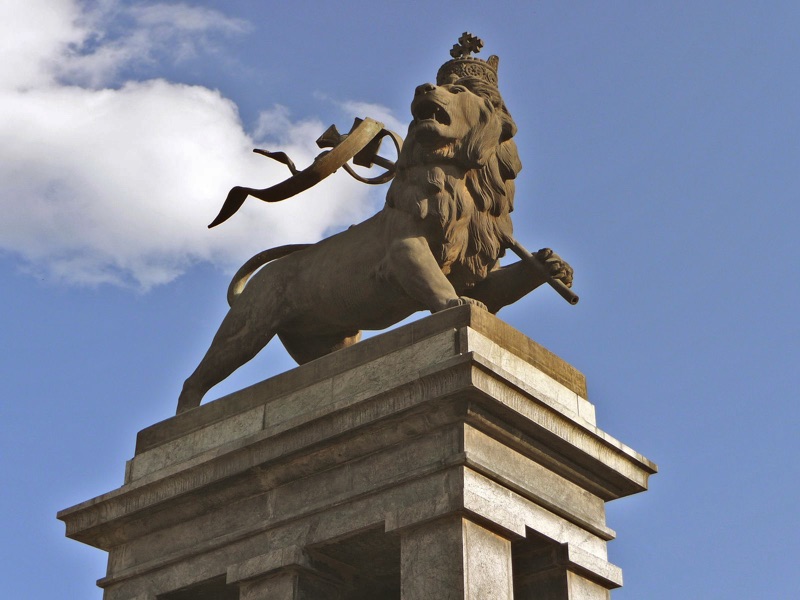
Judah Lion, Addis Ababa, 1930
Yet another Judah Lion (aka the Lion of Zion) in Addis Ababa got commissioned in 1954 by the emperor Haile Selassie I himself.
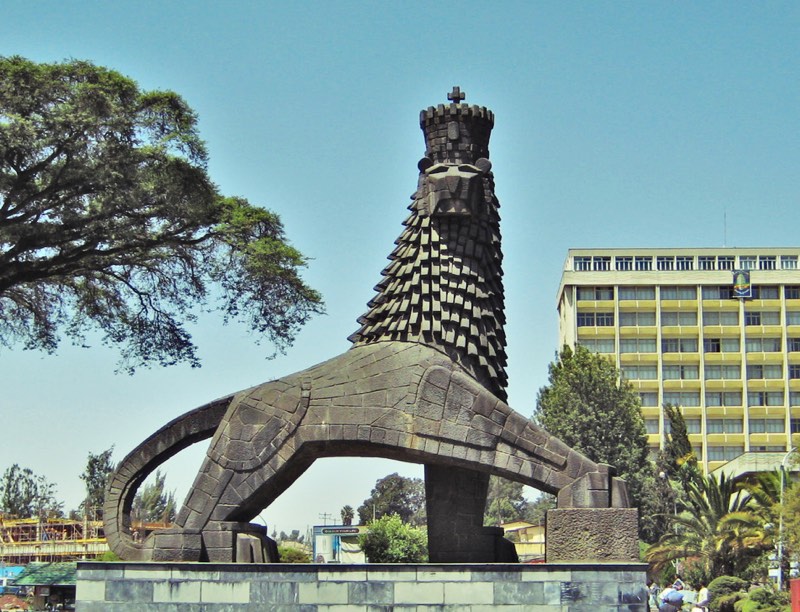
Judah Lion, Addis Ababa, 1954
Rastafari discourage the use of -ism and -ians suffixes
Speaking about the Rastafari’s representation of evil, the Babylon. We use the term “Rastafari” instead of “Rastafarianism” because the latter is… wait for that: oppressive, Babylonic, and very negative.
Suprisingly, the Merriam Webster dictionary confirms it:
1) “ism”, as a noun – an oppressive and discriminatory attitude or belief.
2) “-ism”, as a suffix – indicates prejudice, discrimination, or an abnormal state resulting from an excess of a thing.
https://www.merriam-webster.com/dictionary/-ism
Indeed!
Have you ever noticed that the Western culture refers to most of foreign religions and teachings adding “-ism” to the original word, such as Buddhism, Confucianism, Zoroastrianism, Hinduism, etc, but never say “christianism”? Try saying “christianism” to feel how hostile it sounds.
It is Hindu, and not “hinduism”,
It is Mazdayasna, and its practitioners hardly called it “zoroastrism”.
So Rastafari use the “Rastafari” word, discouraging “-ism” and “-ian” as much as they disgrace the Babylonic ideologies as a whole. Though, they protest peacefully singing, through the lyrics of reggae and ska.
Aye-aye, unbelievably, the reggae (and ska) are the rebellion songs!
Ska
Ska was a pop-version of reggae, called “bluebeat” in England, being a mix of jazz and blues. Ska is yet outdated and rarely in use nowadays.
Ska — is a precursor of reggae, developed in the 1950-60s as a mild protest against social and political conditions in Jamaica.
While ska rhythms seem happy and content, in fact, they are about the pain and suffering of the people of Jamaica under the dishonest governmental regime. Ska is similar to reggae but applies a softer manner of blues. My god, what on Earth can be even softer than reggae? Ska can be!
Ska introduced Jamaican drumming to the world for the first time, which has happened long before the transformation of ska into reggae. The famous ska titles were “Oh Carolina”, “Another Moses”, and “Babylon Gone”.
Female Corruptible Influence
Ska musicians expressed the deep personal pain they were gaining from the political forces and, surprisingly, the pain from the “corruptible influence of a female”. They’ve been promoting that the temptation of female flesh eventually leads in general to negative things: broken hearts, loneliness, and teardrops.
This explains a lot about Bob Marley’s “No woman, no cry” — while being romantic in sound, the lyrics disgrace the female role in society. Oops!
To advocate this provision, let me add that Woman is worshiped as the incarnation of love and a deity for tens of thousands of years in the history of mankind. Apparently, a woman clearly demonstrates the dual nature, just as gods do all the time.
Thus, the lyrics of reggae and ska do not necessarily mean anything bad towards women, but they support the divine duality of woman’s nature, just like so many cultures did for ages.
To understand the concept of divine duality of every Woman as she is an ancient goddess of life and war, try to think about water or the Sun: both create life, and both can severely destroy everything. Yep, that’s hot.
Only some of the Rude Boys were Rastafari
In 1965 in Jamaica, unemployed ghetto youths, 14-25 years old, living in the shantytown of Kingston, the capital city of Jamaica, formed a strong and well-organized rebellion force armed with knives, cutlasses, and guns. They became a certain threat to the middle class, looting houses and shops, clashing violently and successfully against the law enforcement, living only for “run faster, jump higher, fuck longer” as they claimed.
Rude Boys embraced the image of an outlaw hero and a symbol of a new generation opposing the system which (they suggested) produced unemployment and poverty in Jamaica. Guess that for “rudies” marijuana was not exactly a spirituality, and their behavior, righteous or not, can hardly match the “peace and love” approach of the Rastafari followers.
However, some “rudies” claimed and pretended they were Rastafari, adopting the Rastafari language, appearance, dreadlocks, and also consuming weed openly. Consequently, citizens of Jamaica organically associated Rude Boys with the already existing negative, lunatic image of Rastafari.
Rastafari in their turn desperately denied any connection to “rudies” by all means, and never encouraged or promoted any violent action towards other people in exchange for gaining their own liberty. The suffering of humans, regardless of their negativity, is out of the question too.
Rastafari and Rude Boys highlighted identical goals to “fight” poverty and oppression but indeed espoused two radically different ideologies.
Grounation day: “God is here!”
Only once the king of kings Haile Selassie has visited Jamaica, it’s happened on the 21st day of April in 1966, and the 4/21 day is celebrated ever since by Rastafari, and they call it “Grounation day”.
100,000 people gathered at the airport on the 4/21 of 1966, and 10,000 of them were Rastafari, who smoked bongs, all the time chanting “God is here!” — the long-awaited Messiah finally arrived on the island of Jamaica to liberate them and take them to Zion in Africa!
“We have to go to Africa to live with our brothers and sisters there. Blacks remember, our king Haile Selassie grants land space for us in Ethiopia,” — Rasta Historian, writer to Bongo-man, Rastafari newspaper, Jamaica, 1968
Well, their expectation of repatriation to Africa didn’t work that way. Even though there is a piece of free land in Ethiopia, that Haile Selassie allocated for the Rastafari community in Shashamane town, but the king of kings did not take all Jamaicans to that Zion after his visit of Jamaica.
Instead, Haile Selassie has spoken to Rastafari leaders and proposed a new concept to them — to refuse the idea of physical repatriation to Africa, to the biblical Canaan, the promised land, but replace it with the pursuit of political liberation of Jamaica.
-
Among other goals, the emperor Haile Selassie wished to influence the public opinion in the country, persuading political leaders of Jamaica that the “rastas” could no longer be written off as “dangerous freaks”. This made reggae commercially viable, and also allowed the Rastafari religion to take off for the global spread.
-
Rita Marley, the wife of Bob Marley, converted to Rastafari faith as she saw Haile Selassie passing by in his motorcade. She later said she saw a stigma on his hand when he waved to the crowd.
-
The “grounation” as a word in the “Grounation day” derives from “foundation”. We’ve mentioned how Rastafari invent words to stress Letter I’s divinity in the already hardly understandable Jamaican Creole; but this time, for the “grounation” word, Rastafari expressed the idea that the Haile Selassie’s touchdown in Jamaica felt like a foundation for them but as he touched the Jamaican ground it was actually the “Grounation”.
Haile Selassie influenced the incorporation of “rudies” into reggae
By the time of the visit of Haile Selassie to Jamaica, the “Rastafari music” was already transforming from ska to reggae under the influence of R&B. But the idea the emperor have thrown about the liberation of Jamaica made reggae more aggressive and political, as only “aggressive” reggae could be!
The reggae musicians reacted by applying to build the heroic image out of “rudies” (Rude Boys), demonstrating the virtual alliance between Rude Boys and Rastafari united from now on against the common enemy, the system that produced unemployment and poverty, the Babylonic evil.
From Ska passive crying Rastafari slowly switched to reggae struggle. The sounds of reggae changed to describe the society in the process of transformation. Also, the religious Rastafari became the political power, which promoted rebellion and liberation.
Peace and love!
The Western way of thinking may call a violent image of Rastafari fighting for liberation, disobeying the Babylonic government. However, in reality, Rastafari oppose the Western mentality, as they are the “silent protesters”, and the “peaceful rebels”.
“We are truly humble people whose response to evil is to flee from it,” — Bongo Dizzy in Bongo-man, Rastafari newspaper, Jamaica, 1968”
Rastafari express their claims and demands exclusively through music and never consider a violent action. Love and peace they also express in asceticism.
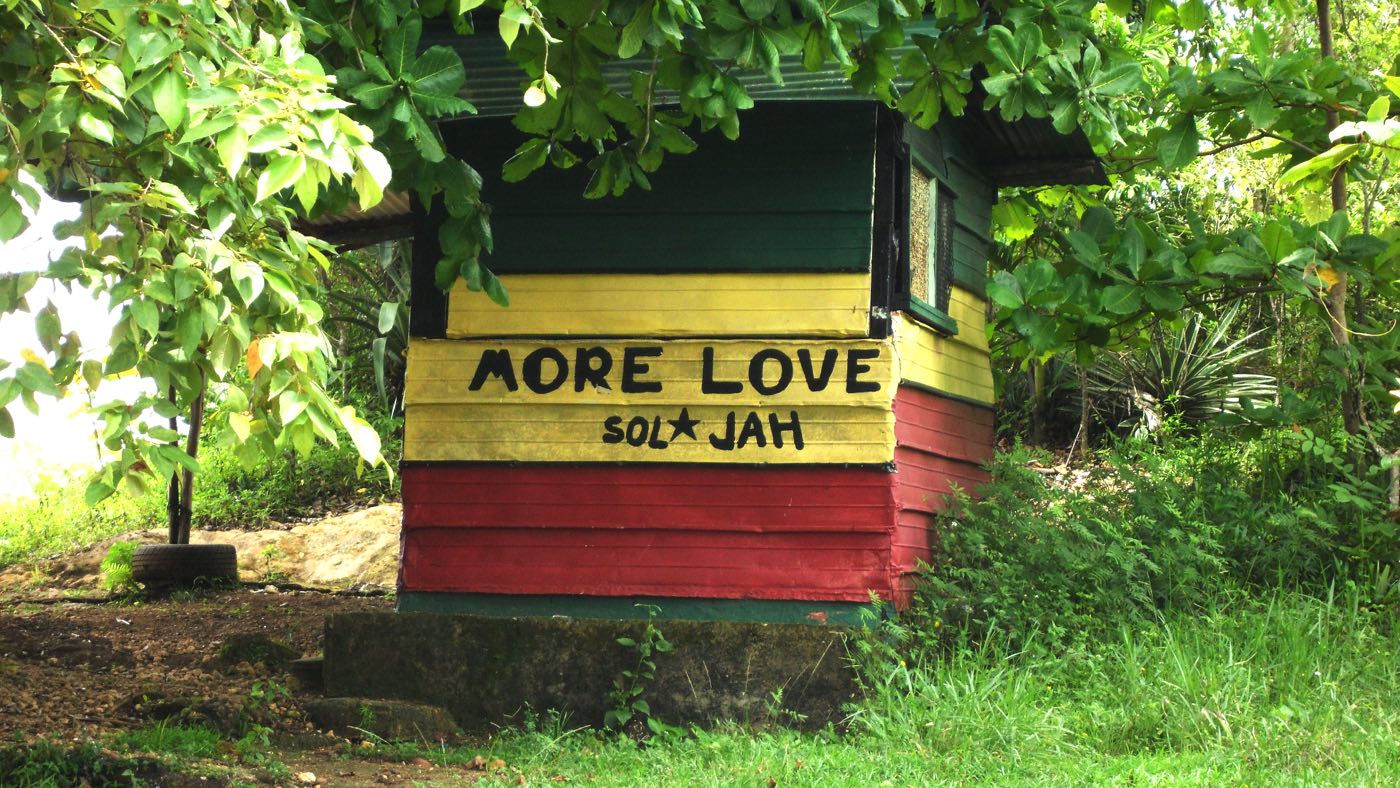
Rastafari shanty “villa” in Jamaica
Sun, 12/Nov/23
